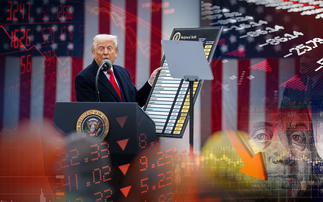Schemes must beware serial disruptors including China, populism and demographics, says PIMCO.
Major secular drivers have the potential to significantly disrupt the global economy, financial markets, and investors' portfolios over the next three to five years. In our latest Secular Outlook, developed in discussion with PIMCO investment professionals and outside experts at our recent economic forum, we discuss our baseline long-term view for the global economy and share ideas for how investors can deal with disruptions. Here are the key takeaways.
Our baseline: lackluster growth, low inflation, shallow recession
Our base case for the global economy over the secular three- to five-year horizon sounds relatively benign - at least at first sight. We foresee a continuation of lackluster economic growth on average. We expect low inflation to persist and central banks to keep interest rates at or below New Neutral levels.
Importantly, our baseline continues to include a global recession at some stage during the secular horizon. It would likely be a shallow recession, but also a sluggish recovery.
Beware of serial disruptors
However, this relatively benign baseline is only one of several realistic alternative scenarios. During our forum discussions, we identified five secular trends that have the potential to disrupt the global economy, financial markets, and investors' portfolios in the next three to five years, and one "supersecular" factor that we think is important for our clients, our industry, and our firm over an even longer-term horizon:
China: While our baseline view is for a controlled gradual slowdown of China's economic growth over the secular horizon, the path may turn out to be bumpier than expected, especially if the trade war with the U.S. escalates further. Also, China's targeted efforts to move up the ladder to higher-value-added manufacturing will likely disrupt established producers elsewhere. Finally, China's growing economic and geopolitical power could disrupt the established geopolitical order dominated by the U.S. and, irrespective of the outcome of the current trade conflict, is likely to lead to continuing economic and political tensions between the U.S. and China in the coming years.
Populism: The populist challenge from both sides of the political spectrum could result in either positive or negative economic and financial market outcomes. Economic growth and asset prices would be supported if governments tackle overly zealous regulations, reduce the tax burden, and/or address excessive inequality. Or populism could be more detrimental to growth and asset prices when it is aimed at increasing impediments to immigration, cross-border trade in goods and services, and capital flows. In many cases, populism rhymes with protectionism, which is a clear and present danger for a global economic system built on complex international supply chains and myriad financial linkages.
Demographics: Slower population growth and increasing longevity in the major economies are important contributors to lackluster economic growth, low inflation, and the global saving glut that depresses equilibrium, or neutral, interest rates. This is likely to continue to force the major central banks to keep policy rates low or even negative. The longer these trends last, the more disruptive they become. Low interest rates and flat yield curves for longer pose challenges for the financial sector, contribute to rising corporate leverage, and tend to push many investors into riskier assets in search of yield.
Technology: With new technologies becoming better, cheaper, and thus more accessible to a wider range of companies, their benefits for productivity growth are becoming increasingly visible. But the other, ominous side of technology is that it disrupts existing business models in the corporate sector and, while it produces winners, it will create many losers as well. Also, potential jumps in productivity growth, which are not our base case but a distinct possibility, could lead to temporary or longer-lasting technological unemployment, which in turn could feed back into political discontent and further support for populist parties and candidates.
Financial market vulnerability: Looking over the next three to five years, the Federal Reserve's recent pivot has the potential to lead to greater excess in valuations, particularly in credit and similar to the period in the mid-2000s before the onset of the global financial crisis. We are not there yet, but it makes sense to watch very closely for excesses and the potential for corrections, in terms of macro drivers but crucially as part of a disciplined investment process.
Climate-related disruptions: Another focus at our forum was on the longer-term, supersecular disruptive impact of environmental risks such as climate change on human lives, economic activity, and financial markets. Climate-related shocks may become not only more frequent but also more persistent and severe. Moreover, investors will have to factor in additional government responses to climate and other environmental risks in the form of regulation, carbon taxes, and public investment. These will create many winners and losers in the corporate sector, which in turn we believe will require active management of credit and default risks.
Investment takeaways
The disruptive risks discussed above, combined with stretched valuations, have created a difficult investment environment that we believe favors caution, flexibility, and liquidity over yield-chasing. That said, a disruptive market atmosphere should also provide attractive opportunities for active investors.
Equity markets may see lower absolute returns and more volatility. We prefer U.S. duration as a hedge against declines in risk assets and continue to view U.S. agency mortgage-backed securities as a relatively stable and defensive potential source of income. We will pursue high-conviction ideas in corporate credit while remaining cautious on overall credit beta.
Read PIMCO's latest Secular Outlook, "Dealing With Disruption," for further insights into the longer-term outlook for the global economy along with takeaways for investors.
For professional investor use only.
All investments contain risk and may lose value. Investing in the bond market is subject to risks, including market, interest rate, issuer, credit, inflation risk, and liquidity risk. The value of most bonds and bond strategies are impacted by changes in interest rates. Bonds and bond strategies with longer durations tend to be more sensitive and volatile than those with shorter durations; bond prices generally fall as interest rates rise, and low interest rate environments increase this risk. Reductions in bond counterparty capacity may contribute to decreased market liquidity and increased price volatility. Bond investments may be worth more or less than the original cost when redeemed. Equities may decline in value due to both real and perceived general market, economic and industry conditions. Mortgage- and asset-backed securities may be sensitive to changes in interest rates, subject to early repayment risk, and while generally supported by a government, government-agency or private guarantor, there is no assurance that the guarantor will meet its obligations.
This material contains the opinions of the manager and such opinions are subject to change without notice. This material has been distributed for informational purposes only and should not be considered as investment advice or a recommendation of any particular security, strategy or investment product. Information contained herein has been obtained from sources believed to be reliable, but not guaranteed. No part of this material may be reproduced in any form, or referred to in any other publication, without express written permission. PIMCO is a trademark of Allianz Asset Management of America L.P. in the United States and throughout the world. ©2019, PIMCO.
PIMCO Europe Ltd (Company No. 2604517) and PIMCO Europe Ltd - Italy (Company No. 07533910969) are authorised and regulated by the Financial Conduct Authority (12Endeavour Square, London E20 1JN) in the UK.








